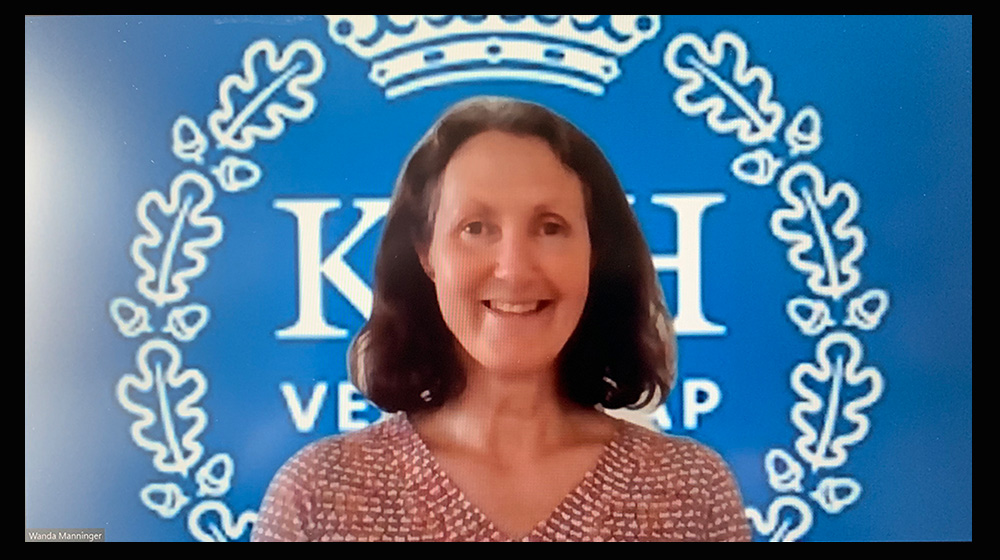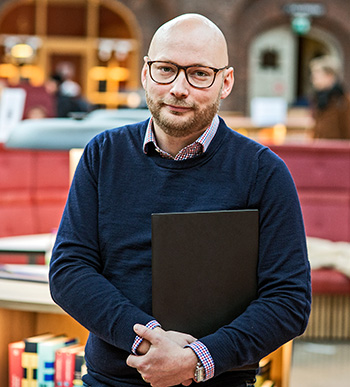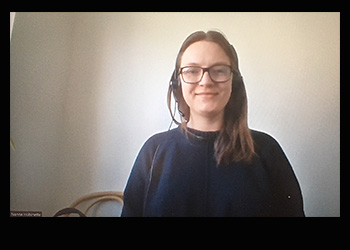“Like Turning an Aircraft Carrier”

“Like Turning an Aircraft Carrier”
When the pandemic put an end to in-person examinations, an intensive transition to distance exams was begun. And things were quite hurried before the spring re-examination period.
“This has been a major challenge for the whole of KTH, but the work surpassed our expectations,” says Wanda Manninger, an operations developer in the Education Support Unit (Utbildningsstöd).
She was responsible for the project on which she collaborated with a working group for E-Learning and Joint Operations Support.
“We’ve really tried to make the distance exams as good as possible. Both employees and students invested all their energy in this effort,” says Wanda Manninger.
She likens the work of setting up the process, as well as other recent related efforts, to turning an aircraft carrier.
“First, we needed to understand the scope of all the new conditions, possibilities and limitations entailed by new technologies, to develop implementation procedures, and to find ways to communicate them.”
The project group conducted tests in Zoom, evaluated the results, and eventually landed on an examination form which they considered to work well. It also became clear that successful implementation necessitated the appointment of a ‘Zoom Manager’. This person specifies all the settings in the conferencing tool, inputs the exam sessions, and invites the invigilator, the examiner and the students to the exam.
“Distance exams have brought about major changes at the schools,” says Wanda Manninger.
“The exam administrators had to adjust their jobs and work together with teachers and other staff to resolve the situation using new and unfamiliar technology, as well as creating new procedures which often needed last-minute changes.”
She believes that KTH has learned valuable lessons from the transition. Among other things, it is not possible to have as many Zoom-monitored exams as regular in-person exams. She adds:
“I see a great advantage in the fact that many employees who have served as digital exam invigilators have gained insight into one of KTH's primary operational processes - the process of education.”

After the re-examination period, a survey was conducted. The aim was to obtain feedback from the teachers and students who had been involved, and to identify things that can be improved prior to the next exam period.
Stefan Stenbom is a Digital Learning teacher at the ITM School and was responsible for the survey study. According to him, the answers suggest that KTH created an acceptable solution, given the prevailing conditions.
“Many teachers chose to conduct practice exams the week before the regular exams, where they gathered their students to practice how the distance exams would be conducted. It’s clear from the survey that this has been an important success factor in their implementation,” says Stefan Stenbom.
He shares Wanda Manninger's view that the transition and implementation went well, and has great respect for the stress and late evenings that the work entailed for many people at KTH. He adds:
“One challenge was that the handling of exams is so decentralised. Every school, department, and division handles the exam themselves, but now we needed to find a KTH-wide solution.”
Stefan Stenbom notes that now that the April re-examination period has concluded, they have 100 per cent more experience with distance examination.
“We’re reusing what worked well and practicing the processes in order to refine and improve everything from guide materials and educational activities to how the course rooms are created.”


